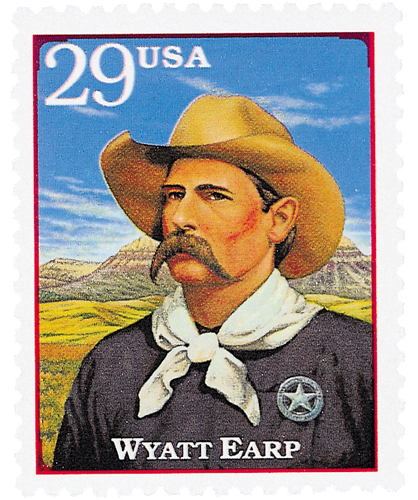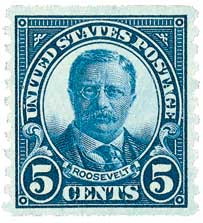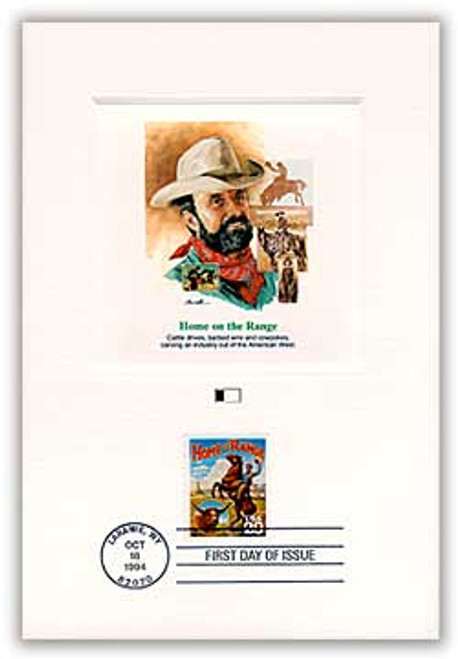
# 4902009 - 1994 Laramie Cancel, Bat Masterson PFCD
Often called the ultimate philatelic issue, the Fleetwood Proofcard is a distinctive commemorative with an elegantly embossed surface. Each Proofcard bears an original work of art complementing the theme of the stamp and created exclusively for Fleetwood by a leading American artist. Proofcards are often collected on their own, but would also make a beautiful addition to your existing stamp or cover collection.
Birth Of Bat Masterson
When he was a child, Masterson’s family moved from Quebec to New York to Illinois before settling in Wichita, Kansas. When he was a teenager, Masterson and his brothers left home to work as buffalo hunters. They then found work grading part of the track for the Atchison, Topeka, & Santa Fe Railroad. When their boss refused to pay them, Masterson cornered him on a train and held him at gunpoint until he paid them.
After engaging in his first gunfight in Sweetwater, Texas, in 1876, Masterson settled in Dodge City, where he met Wyatt Earp. Masterson was made under-sheriff in 1877. That fall he was elected sheriff of Ford County, Kansas. He made his brother city marshal of Dodge, placing his family in charge of all the local city and county police forces.

Early the next year, Masterson quickly caught several train robbers, but was involved in a shootout after a cowboy shot and killed his brother. He lost his bid for re-election in 1879. The following year, Masterson traveled to Nebraska to aid his friend, Billy Thompson, who was going to be lynched after a fight. Masterson snuck his friend out of town and met “Buffalo Bill” Cody along the way. Cody gave the men a safe place to hide and transportation home.

In 1881, Masterson left Dodge to join Wyatt Earp in Tombstone. There, he worked as a look out for the Oriental Saloon. Masterson returned to Dodge to help his brother and was engaged in another shootout and arrested. He was fined $8 and then allowed to leave.
The following year Masterson was made city marshal of Trinidad, Colorado. However, he moonlighted as a faro card dealer and ultimately lost that reelection as well. In 1884, Masterson made his first attempt at journalism when he published a newspaper called Vox Populi. Though it was received positively, the newspaper didn’t last a week.
Masterson then left Dodge City for good and made a new life in Denver where he purchased the Palace Variety Theater in 1888. Masterson was an avid sports fan and soon became a part of that business. He worked as a timekeeper and also bet on heavyweight championship fights. He then briefly worked as a bodyguard for New York millionaire George Gould.

Masterson returned to Denver in 1897 to serve as deputy sheriff of Arapahoe County. While there he founded the Olympic Athletic Club. He traveled back and forth to New York and eventually decided to move there for good in 1902.

Though he ran into trouble with the law a few times after moving to New York, Masterson found a more stable life there. In 1903 he began working on his own column in the New York Morning Telegraph. “Masterson’s Views on Timely Topics” shared his thoughts on sports, particularly boxing. He continued to write this column until his death in 1921. The man who got Masterson this job, Alfred Henry Lewis, also introduced him to President Theodore Roosevelt. Masterson and Roosevelt became good friends, exchanging letters and making frequent visits. Roosevelt them made him Deputy U.S. Marshall for the Southern District of New York, a post he held until 1909.
During this time Masterson contributed articles to Human Life magazine. He wrote about what it took be a gunfighter as well as biographies of his friends Ben Thompson, Wyatt Earp, Luke Short, Doc Holliday, Bill Tilghman, and “Buffalo Bill” Cody.

After being relieved of his duty as Deputy U.S. Marshall in 1909, Masterson spent the rest of his life traveling the country writing about boxing for the New York Morning Telegraph. Masterson has just finished his final column before suffering a heart attack and dying on October 25, 1921. Some 500 people attended his funeral, where a close friend recalled, “He was a 100 percent, 22-karat real man. Bat was a good hater and a wonderful friend. He was always stretching out his hand to some down-and-outer. He had a great sense of humor and a marvelous fund of reminiscence, and was one of the most entertaining companions we have ever known. There are only too few men in the world like Bat Masterson and his death is a genuine loss.” Masterson’s grave says he was “Loved by Everyone.”
Often called the ultimate philatelic issue, the Fleetwood Proofcard is a distinctive commemorative with an elegantly embossed surface. Each Proofcard bears an original work of art complementing the theme of the stamp and created exclusively for Fleetwood by a leading American artist. Proofcards are often collected on their own, but would also make a beautiful addition to your existing stamp or cover collection.
Birth Of Bat Masterson
When he was a child, Masterson’s family moved from Quebec to New York to Illinois before settling in Wichita, Kansas. When he was a teenager, Masterson and his brothers left home to work as buffalo hunters. They then found work grading part of the track for the Atchison, Topeka, & Santa Fe Railroad. When their boss refused to pay them, Masterson cornered him on a train and held him at gunpoint until he paid them.
After engaging in his first gunfight in Sweetwater, Texas, in 1876, Masterson settled in Dodge City, where he met Wyatt Earp. Masterson was made under-sheriff in 1877. That fall he was elected sheriff of Ford County, Kansas. He made his brother city marshal of Dodge, placing his family in charge of all the local city and county police forces.

Early the next year, Masterson quickly caught several train robbers, but was involved in a shootout after a cowboy shot and killed his brother. He lost his bid for re-election in 1879. The following year, Masterson traveled to Nebraska to aid his friend, Billy Thompson, who was going to be lynched after a fight. Masterson snuck his friend out of town and met “Buffalo Bill” Cody along the way. Cody gave the men a safe place to hide and transportation home.

In 1881, Masterson left Dodge to join Wyatt Earp in Tombstone. There, he worked as a look out for the Oriental Saloon. Masterson returned to Dodge to help his brother and was engaged in another shootout and arrested. He was fined $8 and then allowed to leave.
The following year Masterson was made city marshal of Trinidad, Colorado. However, he moonlighted as a faro card dealer and ultimately lost that reelection as well. In 1884, Masterson made his first attempt at journalism when he published a newspaper called Vox Populi. Though it was received positively, the newspaper didn’t last a week.
Masterson then left Dodge City for good and made a new life in Denver where he purchased the Palace Variety Theater in 1888. Masterson was an avid sports fan and soon became a part of that business. He worked as a timekeeper and also bet on heavyweight championship fights. He then briefly worked as a bodyguard for New York millionaire George Gould.

Masterson returned to Denver in 1897 to serve as deputy sheriff of Arapahoe County. While there he founded the Olympic Athletic Club. He traveled back and forth to New York and eventually decided to move there for good in 1902.

Though he ran into trouble with the law a few times after moving to New York, Masterson found a more stable life there. In 1903 he began working on his own column in the New York Morning Telegraph. “Masterson’s Views on Timely Topics” shared his thoughts on sports, particularly boxing. He continued to write this column until his death in 1921. The man who got Masterson this job, Alfred Henry Lewis, also introduced him to President Theodore Roosevelt. Masterson and Roosevelt became good friends, exchanging letters and making frequent visits. Roosevelt them made him Deputy U.S. Marshall for the Southern District of New York, a post he held until 1909.
During this time Masterson contributed articles to Human Life magazine. He wrote about what it took be a gunfighter as well as biographies of his friends Ben Thompson, Wyatt Earp, Luke Short, Doc Holliday, Bill Tilghman, and “Buffalo Bill” Cody.

After being relieved of his duty as Deputy U.S. Marshall in 1909, Masterson spent the rest of his life traveling the country writing about boxing for the New York Morning Telegraph. Masterson has just finished his final column before suffering a heart attack and dying on October 25, 1921. Some 500 people attended his funeral, where a close friend recalled, “He was a 100 percent, 22-karat real man. Bat was a good hater and a wonderful friend. He was always stretching out his hand to some down-and-outer. He had a great sense of humor and a marvelous fund of reminiscence, and was one of the most entertaining companions we have ever known. There are only too few men in the world like Bat Masterson and his death is a genuine loss.” Masterson’s grave says he was “Loved by Everyone.”












